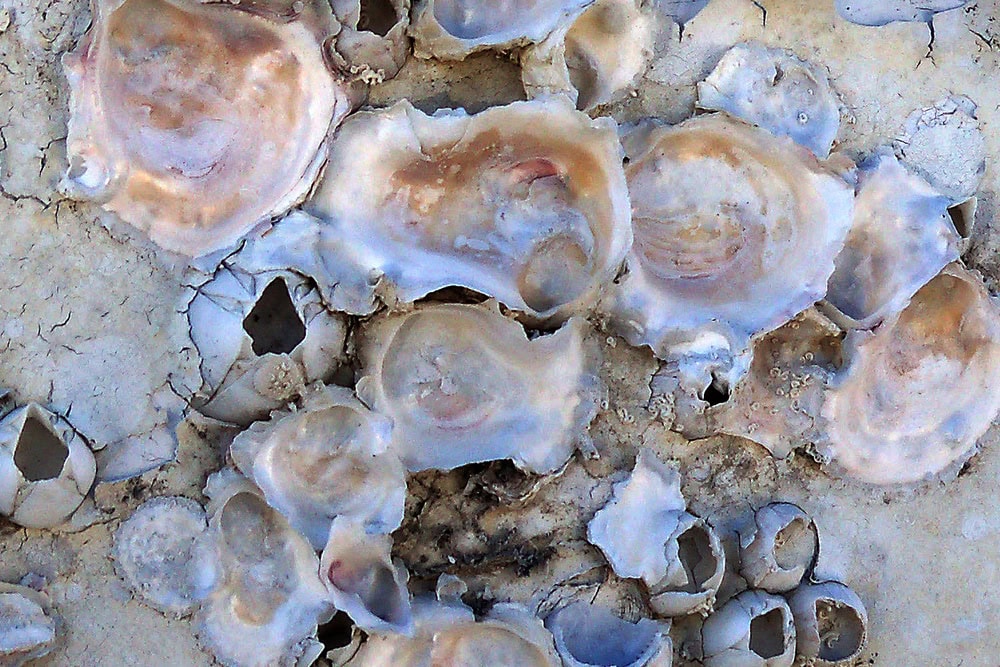
[Image above] Iridescent barnacles—pretty, but unwelcome. Credit: psyberartist; Flickr CC BY 2.0
Anyone who owns a boat knows that if you keep it in the water long enough, you eventually find hundreds of little stowaways happily clinging to the bottom of the hull.
You know what I’m talking about—barnacles!
Barnacles secrete a quick-curing sort of “cement” that keeps them hanging on to boats, ships, and other seafaring vessels. In fact, according to the National Oceanic and Atmospheric Administration, that “cement” that barnacles produce is stronger than so-called superglues, such as the commercial product Krazy Glue.
For the shipping industry, barnacles can create major problems on commercial ships by increasing fuel costs as they contribute to the ship’s drag. The U.S. Navy says barnacle growth can increase weight and drag by nearly 60% and fuel consumption by 40%. They also contribute to corrosion and can be expensive to remove.
In a collaboration between Swinburne University of Technology, Defence Materials Technology Centre, MacTaggart Scott Australia, United Surface Technologies, and Defence Science and Technology, researchers may have found a way to solve the barnacle as well as the corrosion problem on ships. They developed a coating that reduced biofouling by nearly half when compared to other coatings.
“Many scientists around the world are looking for new ways to combat biofouling and corrosion,” senior research engineer at Swinburne and one of the lead scientists Andrew Ang says in an Australian Government Department of Defence news release.
“We have developed new materials and used a supersonic combustion flame jet, i.e. a ‘flame thrower,’ to coat hydraulic machinery parts, and found these new protective coatings reduce biofouling by roughly 50 percent compared to current standard coatings,” he adds.
In one of the studies, the researchers tested three types of high velocity oxygen fuel (HVOF) coatings and compared them to an air plasma spray (APS) ceramic coating on over 100 samples of hydraulic components submerged in seawater. They found that after 20 weeks the HVOF coatings performed better than the APS coatings, as explained in the paper’s abstract. In other words, HVOF coatings inhibited biofouling more effectively than APS coatings.
“If the coating can double the length of time a ship can be at sea or available to be deployed—before it needs to be docked and cleaned—it could save costs and also increase operational readiness for the Defence Force,” Richard Piola, marine scientist at the Department of Defence Science and Technology and coauthor of the paper, explains in the release.
The researchers will soon test the new coatings on the Australian Navy ship HMAS Canberra.
Although the coatings could become costly if used on the entire hulls of ships, they could at least solve biofouling and corrosion issues on the moving parts that are exposed to water.
The paper, published in Taylor & Francis Online is “A comparison of the antifouling performance of air plasma spray (APS) ceramic and high velocity oxygen fuel (HVOF) coatings for use in marine hydraulic applications” (DOI: 10.1080/08927014.2018.1465052).
Author
Faye Oney
CTT Categories
- Biomaterials & Medical


